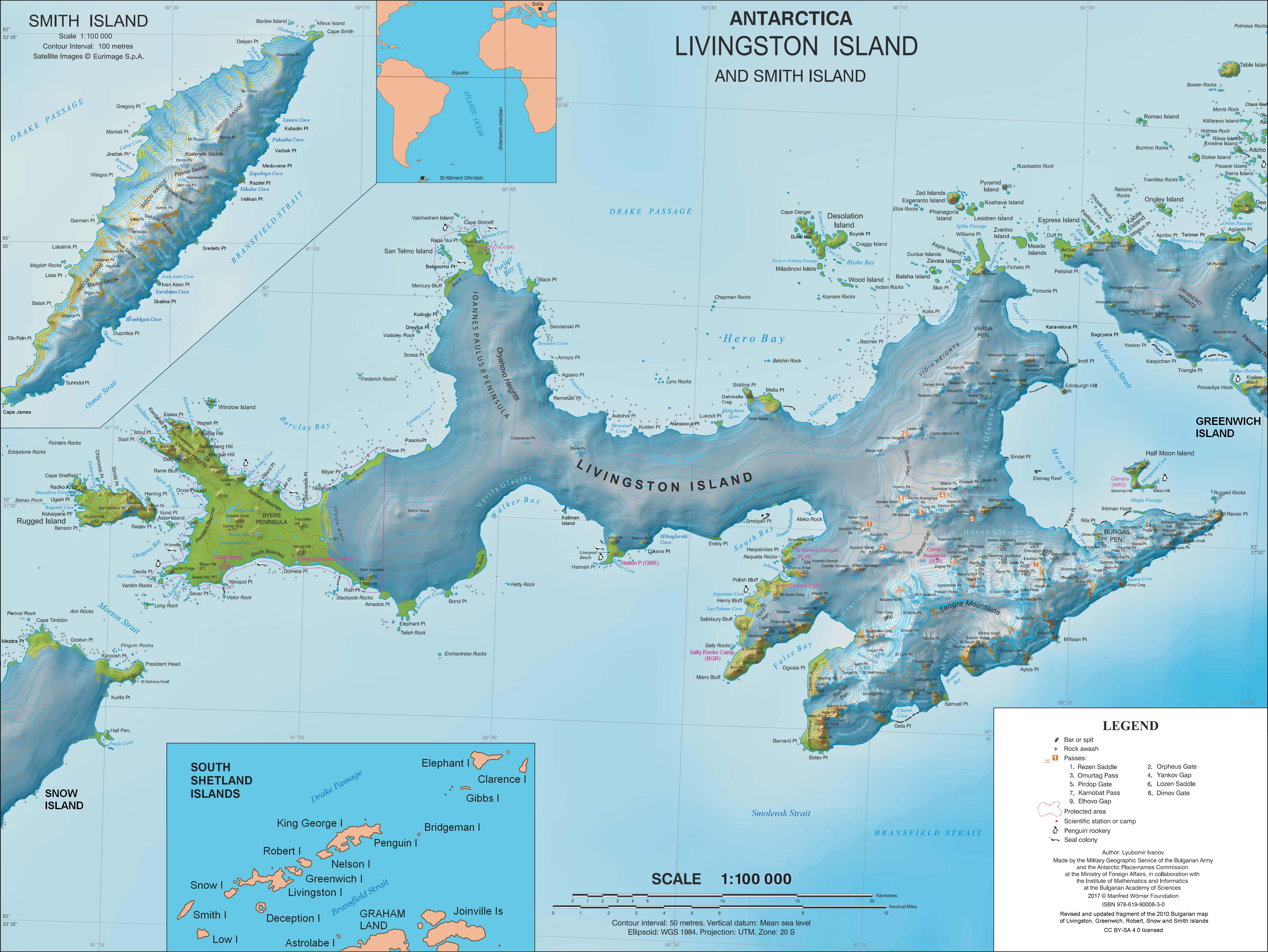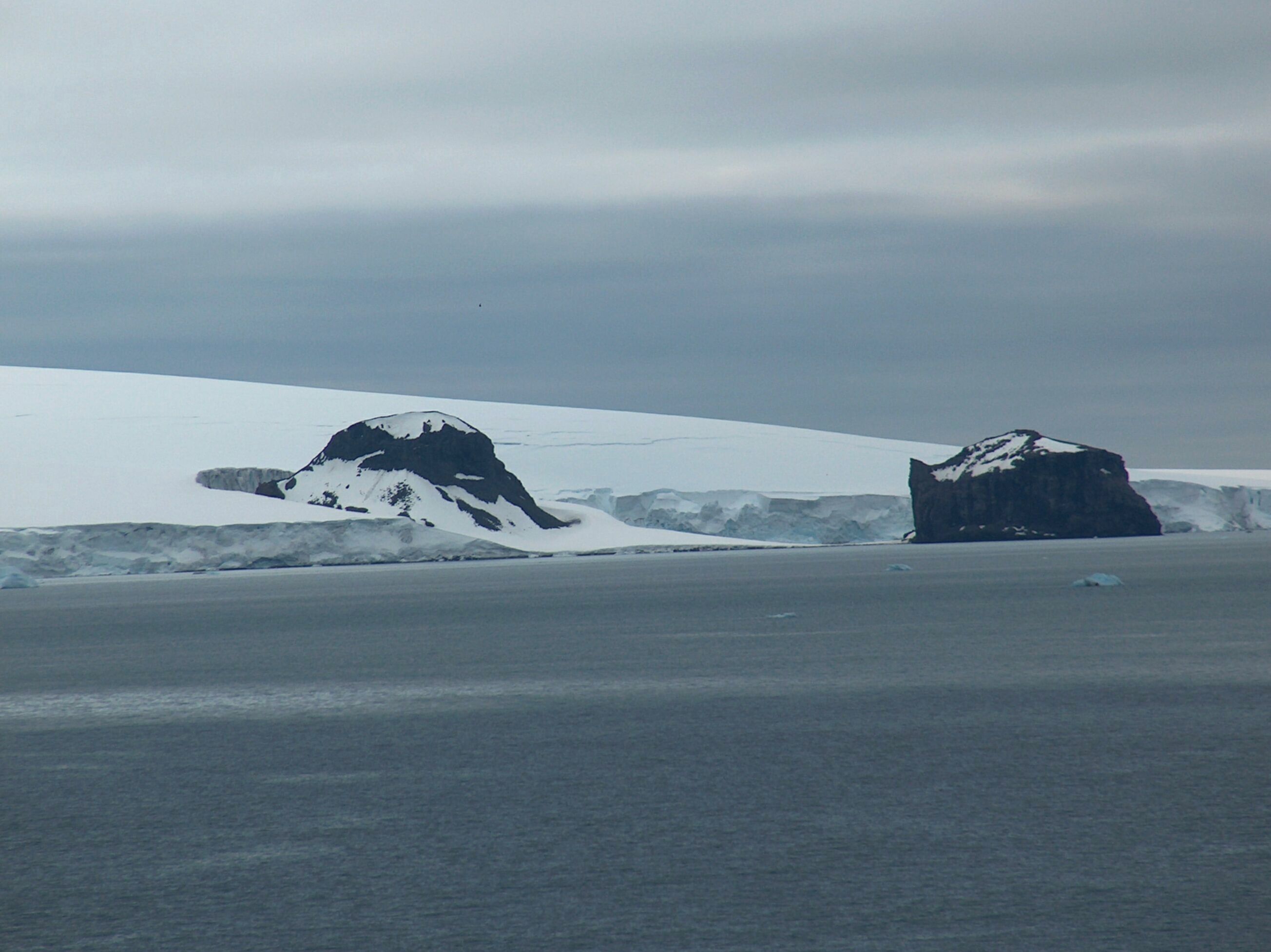|
Karavelova Point
Karavelova Point or Nos Karavelova ( is on the northeast coast of Varna Peninsula, Livingston Island in the South Shetland Islands, Antarctica forming the south side of the entrance to Lister Cove. It is named after Ekaterina Karavelova (1860–1947), translator, author and woman activist. Location The point is located at which is 2.1 km south of Pomorie Point, 7 km southeast of Williams Point and 3.6 km northwest of Inott Point. Maps * L.L. Ivanov et al. Antarctica: Livingston Island and Greenwich Island, South Shetland Islands. Scale 1:100000 topographic map. Sofia: Antarctic Place-names Commission of Bulgaria, 2005. * L.L. IvanovAntarctica: Livingston Island and Greenwich, Robert, Snow and Smith Islands Scale 1:120000 topographic map. Troyan: Manfred Wörner Foundation, 2009. External links Karavelova Point.SCAR Composite Antarctic Gazetteer The Composite Gazetteer of Antarctica (CGA) of the Scientific Committee on Antarctic Research (SCAR) is the aut ... [...More Info...] [...Related Items...] OR: [Wikipedia] [Google] [Baidu] |
Varna Peninsula
Varna Peninsula ( bg, полуостров Варна, poluostrov Varna, ) is a roughly rectangular predominantly ice-covered peninsula forming the northeast extremity of Livingston Island in the South Shetland Islands, Antarctica. It is bounded by Hero Bay to the northwest, by Moon Bay to the southeast, and by McFarlane Strait to the northeast. The peninsula is approximately 14 km long in the southwest–northeast direction and 10 km wide, with a central area occupied by Vidin Heights. The north and east extremities of Varna Peninsula are formed by Phelps Promontory and Williams Point, and by Inott Point respectively. The coast is indented by Lister Cove and Dragon Cove to the northeast, and by Griffin Cove, Charybdis Cove and Eliseyna Cove to the northwest. Bezmer Point is also on the northwest coast of the peninsula. The area was visited by early 19th century sealers. Williams Point was the first land discovered in the Antarctic Treaty area, by the British ... [...More Info...] [...Related Items...] OR: [Wikipedia] [Google] [Baidu] |
Livingston Island
Livingston Island (Russian name ''Smolensk'', ) is an Antarctic island in the Southern Ocean, part of the South Shetlands Archipelago, a group of Antarctic islands north of the Antarctic Peninsula. It was the first land discovered south of 60° south latitude in 1819, a historic event that marked the end of a centuries-long pursuit of the mythical ''Terra Australis Incognita'' and the beginning of the exploration and utilization of real Antarctica. The name Livingston, although of unknown derivation, has been well established in international usage since the early 1820s. Geography Livingston Island is situated in West Antarctica northwest of Cape Roquemaurel on the Antarctic mainland, south-southeast of Cape Horn in South America, southeast of the Diego Ramírez Islands (the southernmost land of South America), due south of the Falkland Islands, southwest of South Georgia Islands, and from the South Pole.L. IvanovGeneral Geography and History of Livingston Island.In ... [...More Info...] [...Related Items...] OR: [Wikipedia] [Google] [Baidu] |
South Shetland Islands
The South Shetland Islands are a group of Antarctic islands with a total area of . They lie about north of the Antarctic Peninsula, and between southwest of the nearest point of the South Orkney Islands. By the Antarctic Treaty of 1959, the islands' sovereignty is neither recognized nor disputed by the signatories and they are free for use by any signatory for non-military purposes. The islands have been claimed by the United Kingdom since 1908 and as part of the British Antarctic Territory since 1962. They are also claimed by the governments of Chile (since 1940, as part of the Antártica Chilena province) and Argentina (since 1943, as part of Argentine Antarctica, Tierra del Fuego Province). Several countries maintain research stations on the islands. Most of them are situated on King George Island, benefitting from the airfield of the Chilean base Eduardo Frei. There are sixteen research stations in different parts of the islands, with Chilean stations bein ... [...More Info...] [...Related Items...] OR: [Wikipedia] [Google] [Baidu] |
Antarctica
Antarctica () is Earth's southernmost and least-populated continent. Situated almost entirely south of the Antarctic Circle and surrounded by the Southern Ocean, it contains the geographic South Pole. Antarctica is the fifth-largest continent, being about 40% larger than Europe, and has an area of . Most of Antarctica is covered by the Antarctic ice sheet, with an average thickness of . Antarctica is, on average, the coldest, driest, and windiest of the continents, and it has the highest average elevation. It is mainly a polar desert, with annual precipitation of over along the coast and far less inland. About 70% of the world's freshwater reserves are frozen in Antarctica, which, if melted, would raise global sea levels by almost . Antarctica holds the record for the lowest measured temperature on Earth, . The coastal regions can reach temperatures over in summer. Native species of animals include mites, nematodes, penguins, seals and tardigrades. Where ve ... [...More Info...] [...Related Items...] OR: [Wikipedia] [Google] [Baidu] |
Lister Cove
Lister Cove is a 2.1 km wide cove indenting for 1.55 km the northeast coast of Varna Peninsula, Livingston Island in the South Shetland Islands, Antarctica south of Pomorie Point and north of Karavelova Point. The cove is fed by Rose Valley Glacier. It was named by James Weddell. British mapping in 1825 and 1968, and Bulgarian mapping in 2005 and 2009 from the Tangra 2004/05 survey. Maps South Shetland Islands.Scale 1:200000 topographic map No. 5657. DOS 610 – W 62 60. Tolworth, UK, 1968. * Islas Livingston y Decepción. Mapa topográfico a escala 1:100000. Madrid: Servicio Geográfico del Ejército, 1991. * L.L. Ivanov et al. Antarctica: Livingston Island and Greenwich Island, South Shetland Islands. Scale 1:100000 topographic map. Sofia: Antarctic Place-names Commission of Bulgaria, 2005. * L.L. IvanovAntarctica: Livingston Island and Greenwich, Robert, Snow and Smith Islands.Scale 1:120000 topographic map. Troyan: Manfred Wörner Foundation, 2009. Antarctic ... [...More Info...] [...Related Items...] OR: [Wikipedia] [Google] [Baidu] |
Ekaterina Karavelova
Ekaterina Karavelova ( bg, Екатерина Каравелова), (21 October 1860 in Rouschuk – 1 April 1947 in Sofia), was a Bulgarian educator, translator, publicist, suffragist and women's rights activist. She was the founder of the cultural women's organization ''Maika'' and its chairperson in 1899-1929, Vice chairperson of the Bulgarian Women's Union in 1915-1925, president of the Bulgarian branch of the Women's International League for Peace and Freedom in 1925, co-founder of the Bulgarian-Romanian Association in 1932, co-founder of the Bulgarian Writers Association and its president in 1935. Active as a teacher, she was early on active in the debate of women's education and status of female teachers. In 1901, she was a co-founder of the Bulgarian Women's Union alongside Vela Blagoeva, Kina Konova, Anna Karima and Julia Malinova. The organization was an umbrella organization of the 27 local women's organisations that had been established in Bulgaria since 1878. It ... [...More Info...] [...Related Items...] OR: [Wikipedia] [Google] [Baidu] |
Pomorie Point
Pomorie Point (Nos Pomorie \'nos po-'mo-ri-e\) is a point on the coast of McFarlane Strait forming the north side of the entrance to Lister Cove, Varna Peninsula, Livingston Island in the South Shetland Islands, Antarctica. The point is named after the Bulgarian town of Pomorie. Location The point is located at , which is 5.17 km southeast of Williams Point, 7.61 km northeast of Miziya Peak in Vidin Heights, 5.49 km northwest of Inott Point, 4.36 km south-southwest of Duff Point, Greenwich Island, and 2.5 km south-southeast of Channel Rock (British mapping in 1968, Bulgarian mapping in 2005 and 2009). Maps South Shetland Islands.Scale 1:200000 topographic map. DOS 610 Sheet W 62 60. Tolworth, UK, 1968. * L.L. Ivanov et al. Antarctica: Livingston Island and Greenwich Island, South Shetland Islands. Scale 1:100000 topographic map. Sofia: Antarctic Place-names Commission of Bulgaria, 2005. * L.L. Ivanov. Antarctica: Livingston Island and Greenwich, Robert ... [...More Info...] [...Related Items...] OR: [Wikipedia] [Google] [Baidu] |
Williams Point
Williams Point is the point forming both the north extremity of Varna Peninsula and the northeast tip of Livingston Island in the South Shetland Islands, Antarctica. Separated from Zed Islands to the north by Iglika Passage. The discovery of the South Shetland Islands was first reported in 1819 by William Smith, Master of the brig ''Williams'' who had sighted the point on 19 February that year. An 1820 publication suggests that Smith gave the name ‘Williams’ to a point of land in this vicinity. In recent years the place name Williams Point has been established in international usage for the point described. Location The point is located at which is 9.47 km north of Miziya Peak in Vidin Heights, 8.8 km east of Desolation Island, 1.5 km south of Zed Islands and 5.5 km west of Duff Point on Greenwich Island. British mapping in 1822, Chilean in 1971, Argentine in 1980, Spanish in 1991, and Bulgarian in 2005 and 2009. Maps Chart of South Shetland in ... [...More Info...] [...Related Items...] OR: [Wikipedia] [Google] [Baidu] |
Inott Point
Inott Point () is a point north-northeast of Edinburgh Hill forming the eastern extremity of Varna Peninsula on Livingston Island in the South Shetland Islands, Antarctica. Situated 4.3 km southwest of Bagryana Point on Greenwich Island across McFarlane Strait. In association with the names of nineteenth century sealers in this area, it was named by the UK Antarctic Place-Names Committee after Captain Robert Inott, Master of the American sealing ship ''Samuel'' (after which Samuel Peak Samuel Peak is the 540 m peak in central Vidin Heights, Livingston Island, in the South Shetland Islands, Antarctica. Surmounting Panega Glacier to the east and Kaliakra Glacier to the south. The peak is named after the American sealing shi ... was named) from Nantucket, who visited the South Shetland Islands in 1820–21. Maps * L.L. Ivanov et al. Antarctica: Livingston Island and Greenwich Island, South Shetland Islands. Scale 1:100000 topographic map. Sofia: Antarctic Place-names Com ... [...More Info...] [...Related Items...] OR: [Wikipedia] [Google] [Baidu] |




